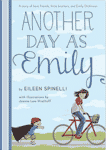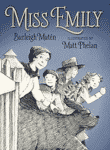The best in poetry (and poetic things)
1 Art
I suppose if I looked around I could find someone who would argue that art is not a consumable. That is, if it can be eaten (or otherwise depleted) then it’s not art. Well, such a person can believe that all he wants. As my mother would say when I refused to eat strawberries (a condition from which I later recovered), “All the more for me.” It’s okay. You can feel free to refuse to call these chocolate bars created by Unelefante—designed to look like they’re made from melted crayons or covered in paint splatters (a la Jackson Pollock)—art. Because, All the more for me. (And if you’re not convinced the product is art, then at least give the packaging its due.) —Colossal, Unelefante
Your artful chocolate bar from Unelefante is not the kind of thing you’d want to take to the beach, by the way. Melting chocolate (with or without crayons) does not mix with wind and sand. So be sure to drop off the chocolate with me before you go explore these modernist sand castles designed and built by Calvin Seibert. —Wired
2 News
I wrote a lot of my college papers in the wee hours of the morning flanked by a stack of books I was “reading” for the first time on one side and a stainless steel carafe of the Perkins restaurant’s famous “bottomless cup” coffee on the other. On the few occasions when I stayed in to pull an all-nighter, I would succumb to the need for sleep around 3:00 and lie on the living room floor with no pillow or blanket for fear the warmth of my bed and its blankets would swallow me until sometime in the afternoon. All-nighters are something it seems the college student (and parent of a newborn) is uniquely primed to achieve, yet we all know implicitly that it isn’t good for us. Enter the University of Michigan, which has recently opened a “napping station” in the campus’s Shapiro Library. Equipped with vinyl cots and paper-coated pillows, students can snooze peacefully between drafts instead of dozing off in the study carrel, drooling across the Periodic Table of the Elements. —Library Journal
It is no surprise to me that ebook readers purchase more books than other (ie, print) readers. The instant gratification of clicking a yellow button and having the book your friend just recommended appear in your hands is too much to pass up, for many. But I have wondered whether they actually read more than those who primarily read print books. A new Harris poll has 54% of Americans now reading ebooks (a contrast with Pew’s January research that has that figure at only 28%). And while those who read print exclusively still far outnumber those who read only ebooks, it appears that those who read more often on an electronic device read more books than those who more often read print books. —Digital Book World
3 Publishing
The question that everyone (am I overstating?) who writes a book wants answered: (assuming it is an outstanding book that finds a publisher) how does it become a bestseller? If you have spent any time around the publishing world, you probably know that a great book, even with hundreds of hours of hard work and a well-crafted marketing plan, doesn’t necessarily go where its author always dreamed. So what’s the key? Some magic cocktail with the perfect mix of social media, paid advertising, radio and tv appearances and speaking engagements? Well, when you put the final touches on that marketing plan, you might want to find a way to see that the stars align just right. Here’s the question people are asking about Adelle Waldman’s The Love Affairs of Nathaniel P.
“This is the first book I’ve worked on where colleagues from other publishing houses were actually calling me and saying: ‘What did you do on this book? I’ve seen it everywhere, ’” said Mr. Meader, who told his colleagues exactly what they didn’t want to hear: he did nothing differently. The only change was that everything he always hopes for with a book happened.
“You always want it to be a Barnes and Noble pick. You always want lots of great blurbs. You always want a broad spectrum of publications to review it, ” underplayed Mr. Meader.
Some refuse to rule out the occult (“I don’t know how Holt did it. It was just . . . magic, ” said Maris Kreizman, a publishing project specialist at Kickstarter. “If I knew, I’d be a billionaire”), while others point to the obvious: the book just happens to be really, really good. But as any publisher can tell you, and will if you sign a contract with their house, as a way of lowering expectations: lots of really really good books go nowhere. —New York Observer
4 Poetry at Work
We don’t have time today to talk about how I feel about grocery shopping. I’m thinking, though, that if I lived and shopped in the UK, I could go to one of Waitrose’s 317 stores and let Roger McGough’s poetry take my mind off it. The grocer will be displaying the poet’s work around its stores, “from the fish counter to the fruit and vegetable section, and even on the mirrors of the customer toilets.” Says McGough:
It’s about putting a smile on people’s faces as they head for the fish fingers. Poetry doesn’t just belong in the library or on the bookshelf – it can be equally at home on the supermarket shelf. Poems can celebrate the happy events in our lives as well as consoling us in the dark times. —Guardian
This new business venture is pure poetry at work:
H/T EatLoveRead.Me
5 Creativity
Rachel Held Evans is quoted as saying “The next sentence is not in the refrigerator.” So if you’re writing, sorry, you’ll have to skip the snack and look for the next sentence elsewhere. But if you’re drawing, that might be different. Every Friday, illustrator Charlie Layton gives a little under a half hour to creating a new cartoon … on his freezer door. The drawings are clever, if occasionally a little dark. —Buzzfeed
I went through a phase earlier this year of trying very hard to get my mind around John Keats’s concept of negative capability before concluding that I didn’t have to. I could, instead, just practice it, being comfortable leaving my comprehension of the matter in a nebulous, ambiguous state. Fortunately, you can conclude whatever you like—to understand, or not to understand, since Edward Hirsch’s A Poet’s Glossary released last month. The volume is “a compilation of forms, devices, groups, movements, isms, aesthetics, rhetorical terms, and folklore.” Poets.org is currently featuring one entry from the book each week, so if the unresolved negative capability is burning a hole in your brain, you could stop by this week and see if Hirsch can clear things up for you.
6 Write-It
Writing a novel? Or, should I say, are you not writing a novel? Trying not to write a novel? Don’t worry. James Drummond has you covered with ten time-tested steps to ensure you never write your novel. Take, for example, #4. If you must write, write anything but a novel.
Write short stories that could become scenes in the novel you aren’t writing and submit them to prestigious publications. Wait until you hear back from the editors before resuming work. This can easily take care of half the year or more. In most cases you will get a form-letter rejection, which you should take personally, with commensurate discouragement and/or anger. Remember that not taking rejection to heart is the kind of attitude that leads to completed novels. —McSweeney’s
Writing funny is no laughing matter. Actually, it is. But that’s mostly when it’s done. Writing funny is not so easy, and the funny writer often does not find himself amused in the process. There’s an art to it, yes. There’s also a fair bit of science. Peter McGraw and Joel Warner have researched and written about what makes a joke funny in The Humor Code. According to McGraw and Warner, the key to funny is seeing the world a little sideways—taking a “wrong” (even a violation) and making it benign. Spelled out like that, it suddenly doesn’t sound funny at all. Let the humor specialist at EatLoveRead.me break this theory down for you and start writing funnier.
7 Poems
One of the things I love most about my subscription to Every Day Poems is that I meet new poets that I might never have encountered otherwise. This past month I particularly appreciated this poem by Elizabeth Bradfield:
Emissary
Last month, Curator Magazine featured Winter Galaxies by Wende Crowe. The poem is unusual in its form and structure, also in the dialogue taking place. It’s a longer piece, so we’ll just highlight a stanza here. You’ll want to go read the entire poem.
I want to say, I lost my voice. But speaking would give me away. I want to say, I broke my arm, my foot, my head. I broke my head. Rather than say the truth that I am a brittle fraud. I lost my voice so I can’t do the thing you are looking at me expecting me to do. I broke my head.
8 People
Last year when we sponsored the first Take Your Poet to Work Day, Emily Dickinson made an appearance as a Goth. Now, Wendy McNaughton and Chronicle Books have issued a series of illustrations of famous writers reimagined as punk rockers which includes, happily enough, Emily Dickinson. The illustrations are captured in a book, The Punk Rock Writers Journal, releasing in celebration of California Bookstore Day. Also featured in the collection are Kurt Vonnegut, Gabriel Garcia Marquez, Ernest Hemingway, Virginia Woolf, Langston Hughes and others. (Oh, and speaking of Langston Hughes, stay tuned. He is expected to make an appearance in this year’s Take Your Poet to Work Day poets collection.) —Chronicle Books
9 Books

Two fine new children’s books, Eileen Spinelli’s “Another Day as Emily, ” illustrated by Joanne Lew-Vriethoff, and Burleigh Mutén’s “Miss Emily, ” illustrated by Matt Phelan, strive to create, by very different means and with different results, a sense of the poet Emily Dickinson as a person. Spinelli sets her story in contemporary rural Pennsylvania, where an 11-year-old named Suzy Quinn pretends for a while to be Dickinson. The poet is mentioned first only about halfway through the book, but with uncanny subtlety Spinelli manages to evoke her throughout. Mutén, on the other hand, chooses 19th-century Amherst, Mass., as her setting and reveals a child-friendly side of Dickinson that is well documented but little evinced by her verse.
Not so long ago, we embarked on a mission to put an important book on the desks of teachers around the country. You might be tempted to brush this off. (Of course T.S. Poetry thinks it’s an important book, you say. T.S. Poetry published it.) But this is bigger than that. We believe it’s an important book because we’ve seen firsthand what can happen when a young person is subjected to poetry as a blunt-force instrument. And we’ve also seen firsthand what can happen when a young person is taught to read poetry as something she can love. So then, our mission? To get a copy of How to Read a Poem by Tania Runyan (an engaging book that woos a reader into a relationship with poems) into a teacher’s hands in every state. Know an English teacher? Consider giving him this life-changing book.
While you’re thinking, enjoy this audio of the introduction by student reader Sonia Barkat.
10 Sound ‘n Motion
This short film from Motion Poems combines live-action and animation, both in black and white, to capture the emotion of Mark Strand’s Poem of the Spanish Poet. As far as we can tell, Emily Dickinson does not make an appearance. In Goth or otherwise.
Poetry Storehouse is now featuring the poems of L.L. Barkat, including some in audio from her new release, Love, Etc.: Poems of Love, Laughter, Longing & Loss, including this clip of Love Song read by the poet.
Featured image by Hamed Al-Raisi, Creative Commons license via Flickr. Post by Will Willingham.
- Earth Song Poem Featured on The Slowdown!—Birds in Home Depot - February 7, 2023
- The Rapping in the Attic—Happy Holidays Fun Video! - December 21, 2022
- Video: Earth Song: A Nature Poems Experience—Enchanting! - December 6, 2022


Maureen Doallas says
Quite a roundup! Great stuff.
Megan Willome says
I love to hear L.L. read her stuff! I always get more out of it.
And my husband is one of those folks who hardly ever read until he got an ebook reader (Kindle). However, my 15-year-old thinks they’re stupid and buys all her books in print.
Sandra Heska King says
Yep. Rachel said that. I was there.
I love these posts. I always feel so cultured–like a good yogurt.